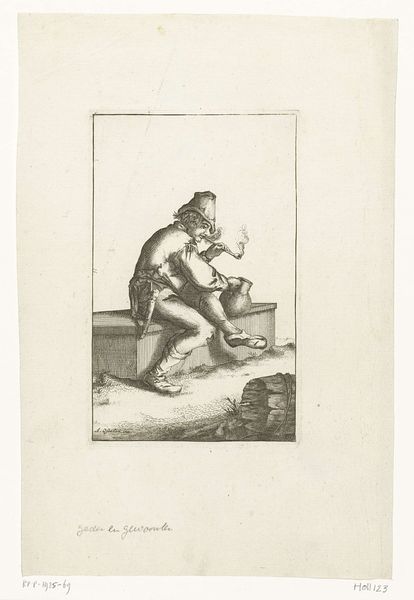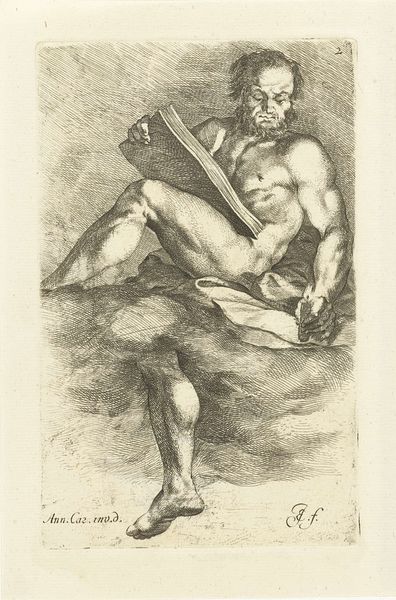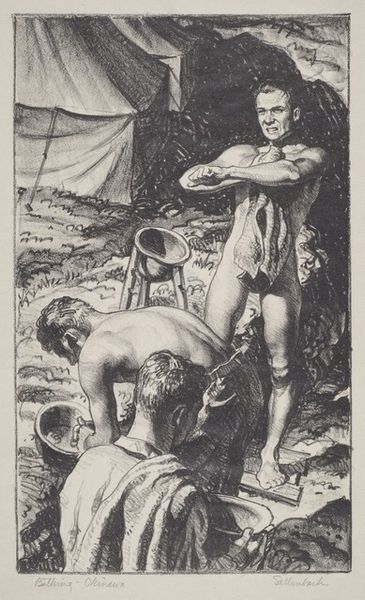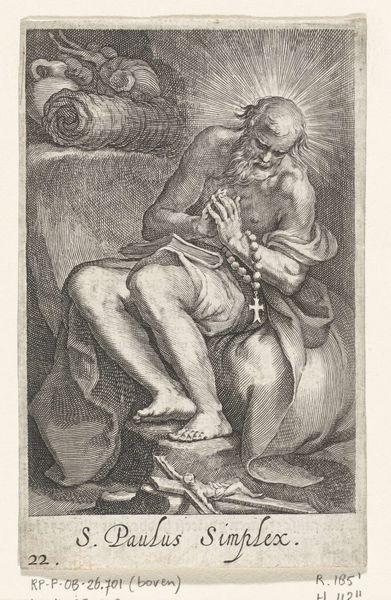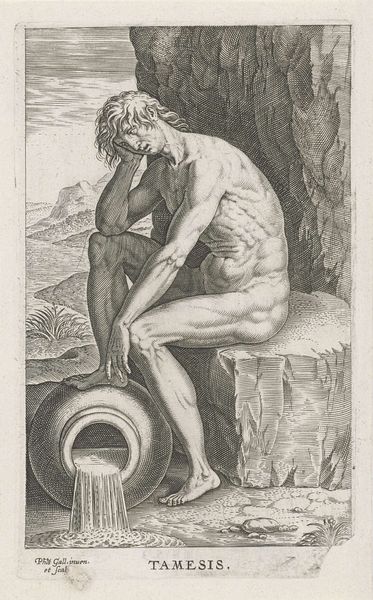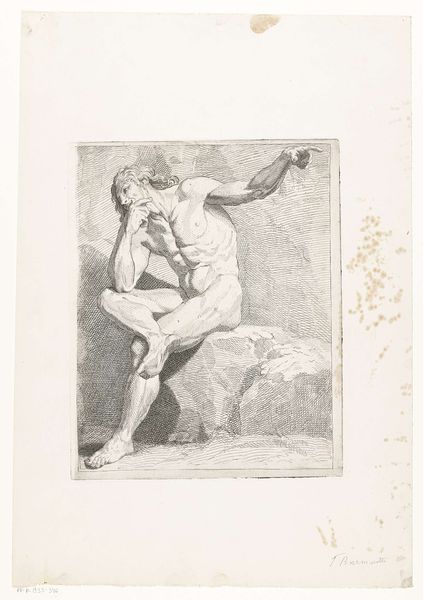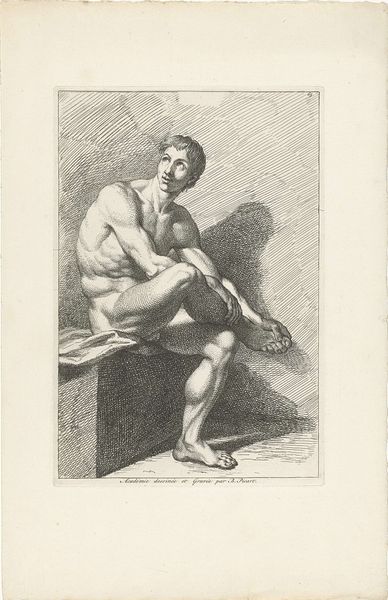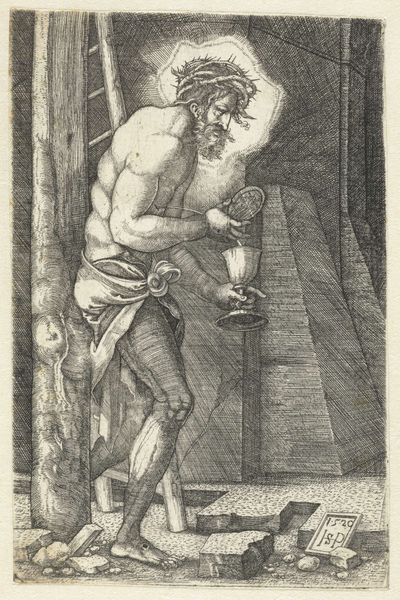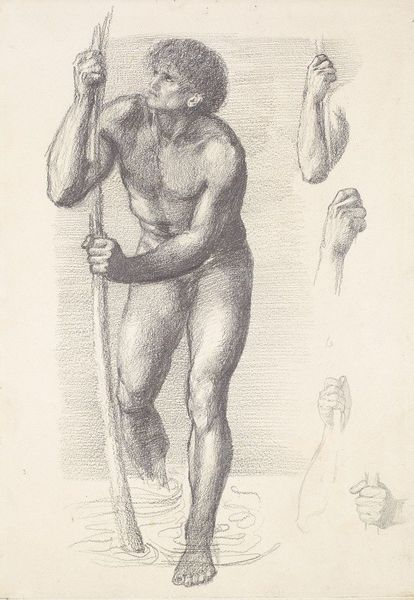
engraving
#
baroque
#
landscape
#
figuration
#
nude
#
engraving
Dimensions: height 315 mm, width 203 mm
Copyright: Rijks Museum: Open Domain
Curator: Look at this engraving. It's Richard Collin's "Coridon," dating to 1676. What strikes you first about it? Editor: Melancholy. Definitely a mood piece. The way the figure's draped, head bowed, everything feels heavy, weighted down. It reminds me of classical sculptures depicting grief. Curator: That sense of weight is interesting. Considering its creation within a rising commercial society where leisure became linked with images of power, Collin's image presents a different kind of leisure. Look at the ruined architecture; the toppled column. It’s a shepherd, yes, but one contemplating a fallen world. Editor: Right, and “Coridon” itself evokes Arcadian themes, a mythical pastoral setting. But it's more than simple nostalgia. The shepherd gazes down at something in his hands—seeds perhaps? There’s a feeling of introspection. It’s a pensive, almost reluctant acceptance of nature’s cycle. Is he pondering his place within it? Curator: Perhaps he’s more a symbolic representation of how Dutch society looked at its classical roots. Engravings were becoming accessible, spreading ideas far beyond wealthy patrons, in a way, "Coridon" is for sale for a few coins, and it proposes an idealized, classical origin of the modern society, through art and imagery. Editor: The pose seems significant. Almost foetal. Curator: It reflects the symbolism of new beginnings from classical ruin, through new dissemination of classic imagery into the masses. It underscores this moment as transitional through his craft as printmaker. Collin is very clearly marketing the new Dutch merchant class by visually offering them symbols of class, authority and temporal connection. Editor: Ultimately, for me, this "Coridon" transcends its era. It still speaks of fleeting beauty and a connection to the land— themes as relevant now as they were then. Curator: I agree. Whether for the 17th century Dutch burghers, or for us today, Collin manages to connect through social strata and temporal divides using universal artistic allegories.
Comments
No comments
Be the first to comment and join the conversation on the ultimate creative platform.
